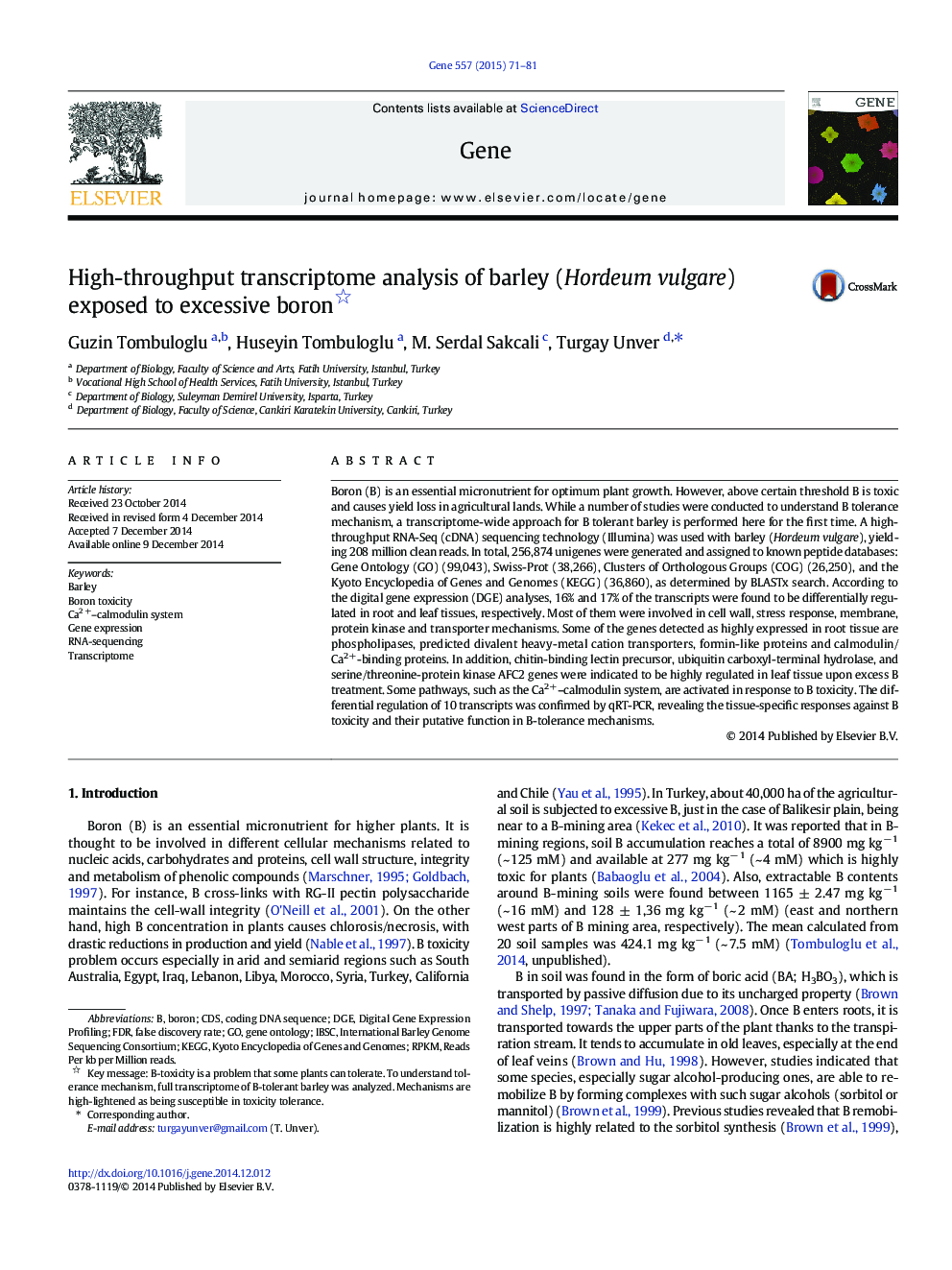| کد مقاله | کد نشریه | سال انتشار | مقاله انگلیسی | نسخه تمام متن |
|---|---|---|---|---|
| 2815943 | 1159903 | 2015 | 11 صفحه PDF | دانلود رایگان |

• Up to 17% of the transcripts differentially regulated in root and leaf tissues
• 8 transcripts were annotated corresponding to Bot1 with their diverse expression.
• Such biological processes as Ca2 +–calmodulin system are activated in response to B.
Boron (B) is an essential micronutrient for optimum plant growth. However, above certain threshold B is toxic and causes yield loss in agricultural lands. While a number of studies were conducted to understand B tolerance mechanism, a transcriptome-wide approach for B tolerant barley is performed here for the first time. A high-throughput RNA-Seq (cDNA) sequencing technology (Illumina) was used with barley (Hordeum vulgare), yielding 208 million clean reads. In total, 256,874 unigenes were generated and assigned to known peptide databases: Gene Ontology (GO) (99,043), Swiss-Prot (38,266), Clusters of Orthologous Groups (COG) (26,250), and the Kyoto Encyclopedia of Genes and Genomes (KEGG) (36,860), as determined by BLASTx search. According to the digital gene expression (DGE) analyses, 16% and 17% of the transcripts were found to be differentially regulated in root and leaf tissues, respectively. Most of them were involved in cell wall, stress response, membrane, protein kinase and transporter mechanisms. Some of the genes detected as highly expressed in root tissue are phospholipases, predicted divalent heavy-metal cation transporters, formin-like proteins and calmodulin/Ca2 +-binding proteins. In addition, chitin-binding lectin precursor, ubiquitin carboxyl-terminal hydrolase, and serine/threonine-protein kinase AFC2 genes were indicated to be highly regulated in leaf tissue upon excess B treatment. Some pathways, such as the Ca2 +–calmodulin system, are activated in response to B toxicity. The differential regulation of 10 transcripts was confirmed by qRT-PCR, revealing the tissue-specific responses against B toxicity and their putative function in B-tolerance mechanisms.
Journal: Gene - Volume 557, Issue 1, 15 February 2015, Pages 71–81